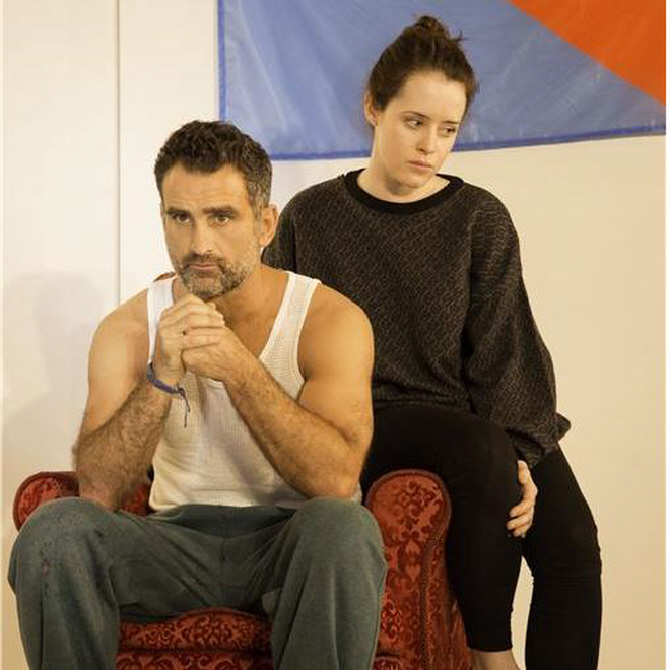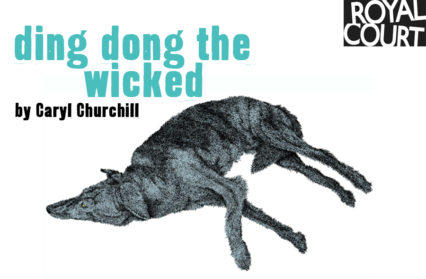Julie Bainbridge provides a critical review of Ding Dong the Wicked, by Caryl Churchill at the Royal Court Jerwood Theatre Downstairs.
Ding Dong the Wicked is a twenty minute, bite-
Written in two parts, Churchill experiments with form by using the second half of the play to mirror the first. Set in a small claustrophobic room, two families focus on the imminent departure of a young soldier to war. A national flag on the wall suggests that each part of the play is set in the opposing country of the conflict. The six actors play different characters in each part.

By Caryl Churchill
Royal Court Jerwood Theatre Downstairs
Dir. Dominic Cooke Cast: Sophie Stanton,
Stuart McQuarrie, Jennie Fuller.
The play opens with a doorbell ringing. A Quiet Man opens the door, shoots the unknown caller and bundles the body into a bag which he then carries off. This is never referenced again. Confusion increases. In the absence of a storyline, action centres on a flickering television screen showing unseen images of killing. The disjointed dialogue seems to focus on a rebellious person locked in a room; smoking; drinking and killing. Lines of conversation hang in the air, unfinished and unacknowledged. In the second part, recognition of lines repeated from the first part allows the audience a false hope of understanding. But understanding is not Churchill’s intention. Only by later reading the text does it become clear that Churchill seems to have chopped lines of dialogue, shaken them in a bag and randomly allocated them to different characters in the second half. Nothing makes any sense. The cast soldier on valiantly with the dialogue; in each half they descend into prolonged chanting of ‘Zig zig zig, zag zag zag’. The result creates a sense of confusion and a search for understanding that strives to mirror the anger, fear and incomprehension experienced by families trapped in war.
A playwright of calibre, this is the latest of Churchill’s attempts to experiment with dramatic form. The two parts of the play emphasise the similarity between people on different sides of a conflict. The words and sentiments, while spoken by different people, remain the same. The non-
There is no doubt that Churchill has pulled off a coup in having two plays running simultaneously at the Royal Court. Whether this challenge to form is successful and whether it’s a significant step in experimental theatre will require a longer run to test its merit. Two days later, I’m still puzzled.
Julie Bainbridge is a scriptwriter and critic at Wales Arts Review.












